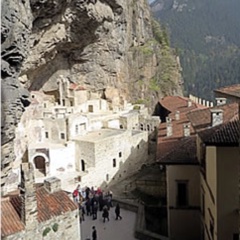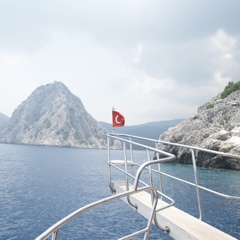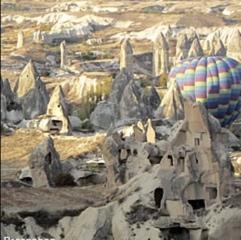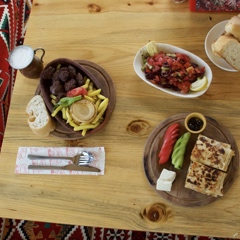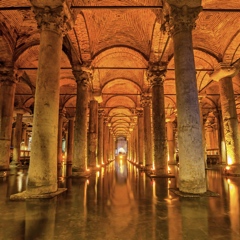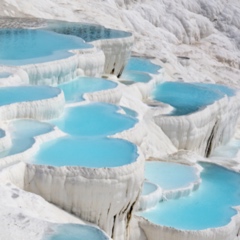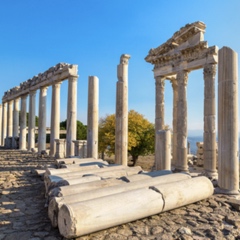The Seljuk Empire of Rum spanned the ancient trade routes of Anatolia, the camel trails along which the riches of Persia and China had been carried to the markets of Europe, and vice-versa.
With trade came wealth, so the Seljuk sultans and the grandees of the empire worked to encourage, increase and protect commerce by road.
The great men and women of the empire endowed hans, or kervansarays (“caravan palaces”) along the Silk Road and other major routes. These huge stone buildings were made to shelter the caravaneers, their camels, horses and donkeys, and their cargoes, to keep them safe from highwaymen and to provide needed travel services.
The typical Seljuk caravanserai is a huge square or rectangular building with high walls of local stone. The walls are smoothly finished but devoid of decoration. Supporting towers or buttresses may be in geometric shapes (half-cylinder, half-octagon, half-hexagon, etc) and the outlets for roof runoff may be stylized animal heads, but otherwise the exterior is severely plain.
The exception is the main portal, which is elaborately decorated with bands of geometric design, Kur’anic inscriptions in Arabic script, and the sculpted geometric patterns of mukarnas (stalactite vaulting).
Walk through the main portal and you pass the room of the caravanserai’s manager and enter a large courtyard. At its center may be a mescit (small mosque or prayer-room), usually raised above ground level on a stone platform. (The mescit may also be built into the walls above the main portal.) Around the sides of the courtyard, built into the walls, are the service rooms: refectory, treasury, hamam (Turkish bath), repair shops, etc.
At the far end of the courtyard from the main portal is the grand hall, a huge vaulted hall usually with a nave and three side aisles. The hall is usually lit by slit windows in the stone walls and/or a stone cupola centered above the nave. The hall sheltered goods and caravaneers during bad winter weather.
Most caravanserais were built as pious endowments: a wealthy Seljuk gave money for the building’s construction and also made available a source of income to be used for its maintenance.
Caravans were received into the caravansarai each evening, and were welcome to stay free for three days. Food, fodder and lodging were provided free of charge, courtesy of the building’s founder. (Most caravans probably moved on the next morning.)
Nearly 100 Seljuk caravanserais still exist along the Silk Roadand other routes in former Seljuk lands. Many are in ruins, but some are well preserved and real treats to visit and explore.
The richest concentration of hans is along the Silk Road from Aksaray east to Nevşehir and Avanos: Ağzıkarahan, Tepesidelik Han, Alay Han, Sarı Han and more. The Sultan Han, grandest of all, is west of Aksaray on the Konya highway.
Another Sultan Han and the fine Karatay Han are east of Kayseri.
There is a bilingual (Turkish & English) book on Seljuk caravansarays: Selçuklu Kervansarayları: Korunmaları, Kullanımları Üzerine bir Öneri (English title: The Seljuk Caravanserais: A Proposal Regarding Their Protection and Use), by Cengiz Bektaş. Istanbul: Yapı-Endüstri Merkezi A.Ş., May 1999, ISBN 975-7438-75-8. Profusely illustrated with quality color photos and architectural plans, it not only lists and describes them, but includes material on their builders and the era in which they lived.
| Seljuk Turkish Architecture |



